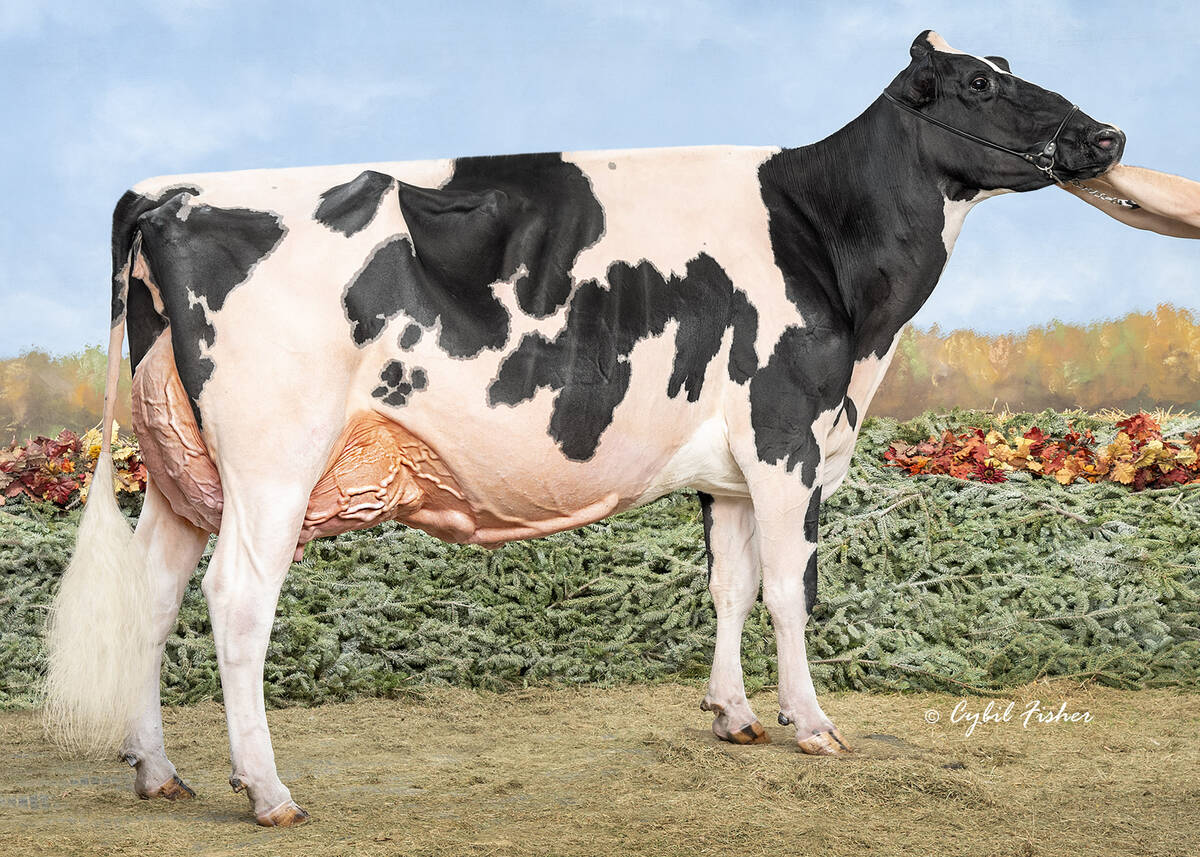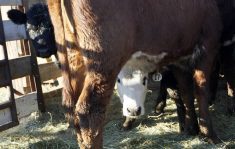There are few critters in this world cuter than a piglet.
But if you work in a modern hog barn and you have to move 100 of the little porkers down a narrow alley or off a truck, there’s a good chance you might lose your patience.
Getting frustrated when pigs won’t do what they’re supposed to only makes matters worse, according to hog handling expert Nancy Lidster of White Fox, Sask., who taught a seminar on the subject to about 30 participants in Brandon March 6.
Technique is everything when working with pigs, both large and small, said Lidster, who has raised pigs for 20 years.
Read Also

Saskatchewan dairy farm breeds international champion
A Saskatchewan bred cow made history at the 2025 World Dairy Expo in Madison, Wisconsin, when she was named grand champion in the five-year-old Holstein class.
Understanding that pigs are in survival mode when confronted by humans is the key to working with them in a way that reduces stress, both for the animals and the handlers.
“Pigs can panic pretty easily. A lot of the things that we don’t want, like piling up, squealing, bunching up, refusing to move or cutting back, are all fear responses.”
While guide boards and shakers are often useful tools, electric prods generally do more harm than good, she said.
Also, shouting and resorting to violence can condition pigs to see interactions with humans as stressful. This not only makes working with them increasingly more difficult, but it can also hurt a hog producer’s bottom line.
Pale, soft, exudative pork, or PSE pork, which is caused by a buildup of lactic acid due to stressful handling before slaughter, can result in costly downgrades.
High turnover among hog barn employees is a serious problem, especially considering the current labour shortage, said Lidster. By learning how to move pigs the right way, workers will spend less time fighting with the animals and find their work easier.
Getting good movement from pigs, whether a single adult animal or a churning mass of hundreds of piglets, depends largely on where the person stands in relation to the animal or group.
Although animals generally have a much wider field of vision than humans, they are particularly sensitive to the blind spot directly behind them, she said. In the pig’s case, this is an area about 50 degrees wide.
Putting pressure on pigs from behind without letting up, or trying to “snowplow” them in a certain direction generally results in the pigs getting nervous and turning to face the human herder. If the pressure isn’t released quickly enough, they try to cut back.
When moving a single sow down a narrow alleyway, the handler should watch the direction that the pig’s head turns and then move continuously in a weaving motion, from side to side, and not follow too closely. When moving cattle or horses, people naturally stand well back because they want to stay out of range of a swift hoof. But because pigs are smaller, people tend to think they can crowd them more.
“One of the big things is to recognize when a pig starts getting scared. Its head and ears are raised up. Also, you’ll notice an overall increase in energy levels. It’s the same thing with horses or cattle,” said Lidster.
“When we put pressure on them and ask them to move, we have to give them a chance to get away from that pressure.”
Once movement is started, the handler must stay in a position where the pigs can still see them.
By exploiting the pig’s natural tendency to want to stay with the group, momentum is developed and maintained by the person’s correct stance and positioning.
“You’re producing a flow and setting up movement for the rest to follow.”
When a handler walks into a pen full of pigs, especially a large number of piglets, the animals try to keep their distance and form a circle around the person. When the handler is standing next to a wall, the circle is naturally cut in half. Lidster calls this the bubble.
She compares the presence of a human in a pigpen to a skunk in a room full of people.
“If a skunk walks into the room, does it have to chase us out? No, we’ll find a way to leave on our own,” she said.
“So we don’t have to chase them. Our presence there is pressure enough to make them want to get out. We just set it up so the pigs are flowing out at a rate that can keep going.”
Standing at just the right spot in the bubble, so that pressure is relieved on pigs moving past heading in the intended direction, is the secret to avoiding frustration and stress.
Too much pressure on the pigs at the back, which are blocked by the ones in front, will result in panic and cutting back.
Forget about leaders and followers, she said. The leader is the one closest to you and responding to your pressure, “unlike what some researchers would tell you.”
Lidster said that her perspective on animal handling changed in 1996 after attending a workshop by livestock handling legend Bud Williams.














